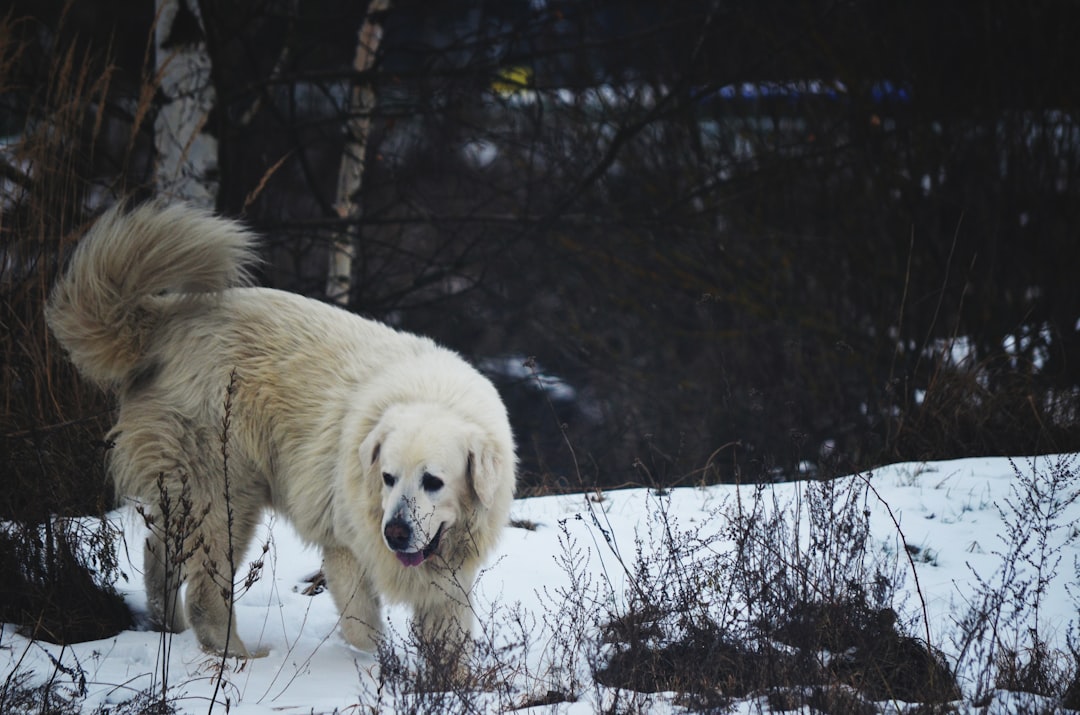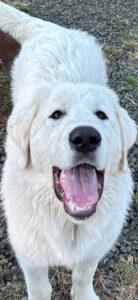Guardian of the Abruzzi: Unveiling the Abruzzenhund Breed/Maremma Sheepdog/Livestock Guardian Dog
The Abruzzenhund is a rare working dog breed that has been bred for over 2000 years in the Abruzzi region of Central Italy to guard flocks and property from predators like wolves and bears.
Introduction to the Abruzzenhund Breed
The Abruzzenhund, also referred to as the Maremma Sheepdog, boasts a fascinating origin story that traces back more than two millennia to the Abruzzi region of Central Italy. Tasked with guarding flocks and property from formidable predators such as wolves and bears, these dogs have earned a reputation for their vigilant protective instincts and steadfast devotion to their human companions. Shepherds in the region historically relied on Abruzzenhunds for their exceptional independence and courage, attributes that were indispensable in the challenging terrains and severe climates where they worked tirelessly to ensure the safety of livestock.
One notable example of the Abruzzenhund’s dedication to their duties is exemplified in the story of Oddball, a remarkable dog of this breed. Oddball gained fame for her heroic efforts in saving a penguin colony on Middle Island in Australia from foxes, a feat that led to the establishment of the Middle Island Maremma Project [4]. This heartwarming tale not only inspired the creation of the movie “Oddball and the Penguins” but also brought attention to the significant role Abruzzenhunds play in protecting and preserving wildlife, showcasing their versatility beyond traditional flock-guarding responsibilities.
1. Origin and History of the Abruzzenhund Breed
The Abruzzenhund breed has deep roots in the Abruzzi region of Central Italy, where it has been bred for centuries to excel as a guardian of livestock and property against threats from predators such as wolves and bears. Known for their loyalty and courage, these dogs have a long-standing reputation for their protective instincts and dedication to their family. The historical significance of Abruzzenhunds lies in their ability to thrive in challenging environments, showcasing their independent nature and unwavering bravery in the face of danger.
An example illustrating the historical importance of Abruzzenhunds is their role in assisting shepherds in safeguarding livestock in remote and rugged terrains of the Abruzzi region. Their innate protective instincts and resilience made them indispensable companions to shepherds facing threats from predators, highlighting the breed’s vital contribution to protecting valuable assets in harsh conditions.
2. Physical Characteristics and Size
Characterized by a large, flat, wedge-shaped head reminiscent of a polar bear, Abruzzenhunds exhibit almond-shaped eyes in ocher or dark brown hues, adding to their unique and striking appearance. These dogs boast a thick, long coat that is primarily solid white, with some permissible variations, and their tail is typically carried down when relaxed and curved up when alert, reflecting their attentive nature. In terms of size, male Abruzzenhunds range from 65-73 cm in height and 35-45 kg in weight, while females are slightly smaller, measuring 60-68 cm in height and 30-40 kg in weight, presenting a robust and sturdy build.
An illustration of the physical characteristics of Abruzzenhunds can be seen in their distinctive appearance, with a large, imposing head resembling that of a polar bear and their striking almond-shaped eyes, which contribute to their unique and captivating presence. Additionally, their thick, white coat and well-proportioned body size emphasize their strength and agility, essential traits for their historical role as protectors of flocks and property in challenging terrains.
3. Temperament and Behavior Traits
Abruzzenhunds are renowned for their loyalty, courage, and independence, making them exceptional guard dogs that exhibit minimal barking tendencies. While they may be reserved with strangers, these dogs demonstrate a friendly and affectionate demeanor towards their family, accompanied by a strong protective instinct that prioritizes the safety and well-being of their loved ones. Training Abruzzenhunds requires a calm, firm, and consistent approach to effectively manage their protective nature and ensure obedience, highlighting the importance of early socialization and guidance to shape their behavior positively.
A specific example showcasing the temperament and behavior traits of Abruzzenhunds is their unwavering loyalty and courage, coupled with a protective instinct that extends to their family and property. Despite being reserved with unfamiliar individuals, these dogs exhibit a loving and devoted nature towards their human companions, underscoring their role as reliable and steadfast guardians. Training Abruzzenhunds with patience and consistency is essential to harness their protective instincts and foster a well-mannered and obedient temperament that aligns with their innate characteristics.
4. Grooming and Care Requirements
Taking care of an Abruzzenhund involves more than just regular grooming; it requires a comprehensive approach to ensure the well-being of these majestic dogs. In addition to grooming, providing a suitable living environment is crucial for Abruzzenhunds. These dogs are not suited for apartment living; they flourish in spacious areas where they can freely exercise and play, allowing them to maintain their physical and mental health.
Early training is key to managing the protective instincts of Abruzzenhunds. It is essential to start training these dogs from a young age to establish boundaries and obedience. For instance, teaching them basic commands like “sit” and “stay” early on can help in preventing behavioral issues later on. Consistency and structure in training routines are paramount to ensure that Abruzzenhunds do not become overly aggressive or intrusive. Furthermore, providing mental stimulation through interactive toys and activities can help keep these intelligent dogs engaged and prevent boredom, which can lead to destructive behaviors.

5. Training Tips and Health Considerations for Abruzzenhunds
Training Abruzzenhunds should commence early in their puppyhood to ensure they develop good behavior and obedience habits that will last a lifetime. Consistency and positive reinforcement are crucial elements in the training process to help these independent dogs understand boundaries and commands effectively. For example, using rewards like treats and praise can motivate Abruzzenhunds to respond well to commands and build a strong bond with their owners.
In addition to training, health considerations play a vital role in caring for Abruzzenhunds. These majestic dogs are prone to health issues such as hip dysplasia and bloat, which can impact their quality of life if not managed properly. Regular visits to the veterinarian for check-ups, vaccinations, and preventive care are essential to monitor and address any health concerns promptly. For instance, maintaining a healthy diet, providing regular exercise, and observing any changes in behavior or appetite are key aspects of responsible Abruzzenhund ownership. By staying proactive about their health, owners can ensure their Abruzzenhunds lead happy and healthy lives. Conclusion: The Abruzzenhund – A Unique and Loyal Companion
In conclusion, the Abruzzenhund is more than just a working dog; it is a breed deeply rooted in history and tradition. Originating in the Abruzzi region of Central Italy, Abruzzenhunds have been serving shepherds for over two millennia, showcasing their unwavering loyalty and protective nature. An exemplary illustration of the breed’s significance is seen in the Middle Island Maremma Project, where an Abruzzenhund named Oddball played a pivotal role in saving a penguin colony from foxes, leading to a heartwarming success story and even inspiring a movie [4]. This project not only highlighted the breed’s protective instincts but also its adaptability and willingness to care for other species, making it a truly unique and compassionate companion.
Furthermore, when comparing the Abruzzenhund to other similar breeds like the Caucasian Shepherd Dog and the Maremma Sheepdog, distinct characteristics come to light. While the Caucasian Shepherd Dog shares some physical traits with the Abruzzenhund, such as a large size and protective instincts, the Abruzzenhund is known for its calm and less aggressive demeanor, making it a more suitable family pet. On the other hand, in contrast to the Maremma Sheepdog, the Abruzzenhund exhibits a stronger protective instinct towards its family, requiring consistent training and socialization to manage its independent decision-making tendencies. Understanding these nuances in behavior and care requirements is crucial for potential owners looking to welcome an Abruzzenhund into their homes.


